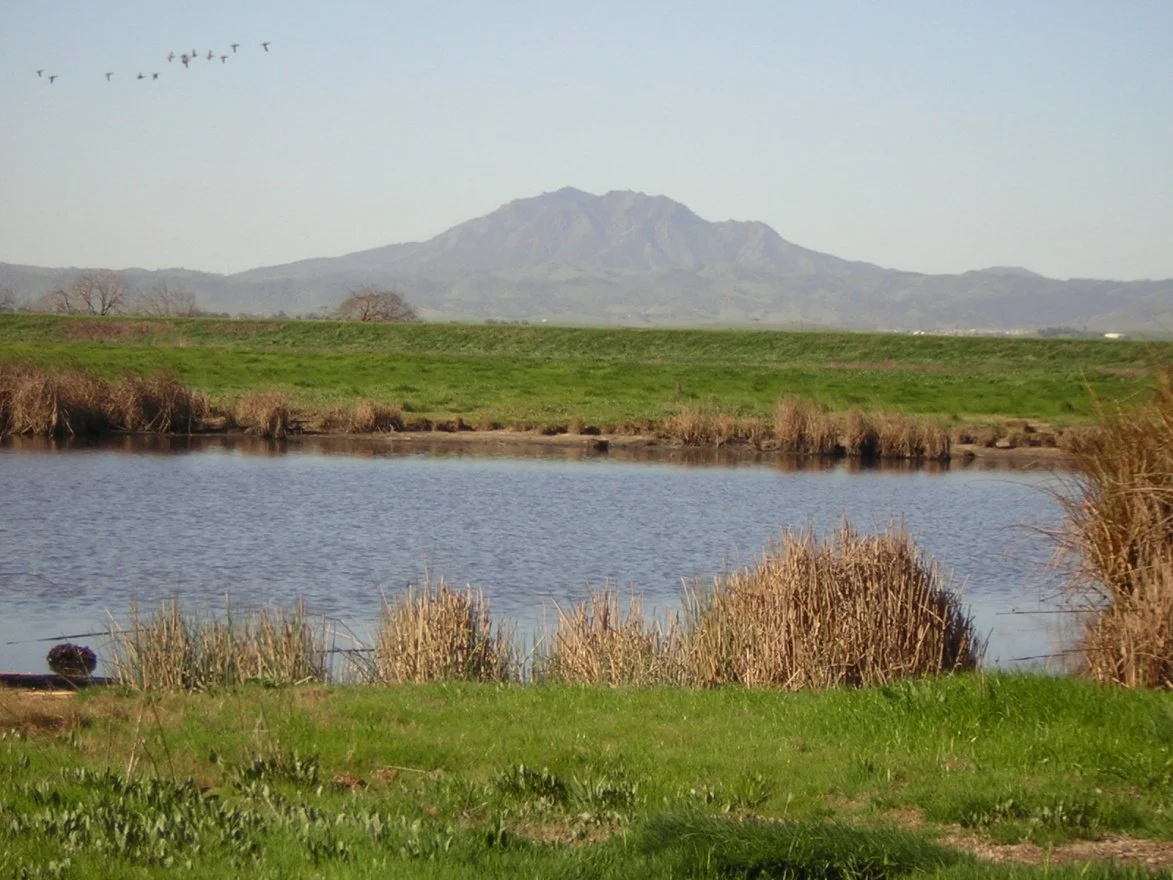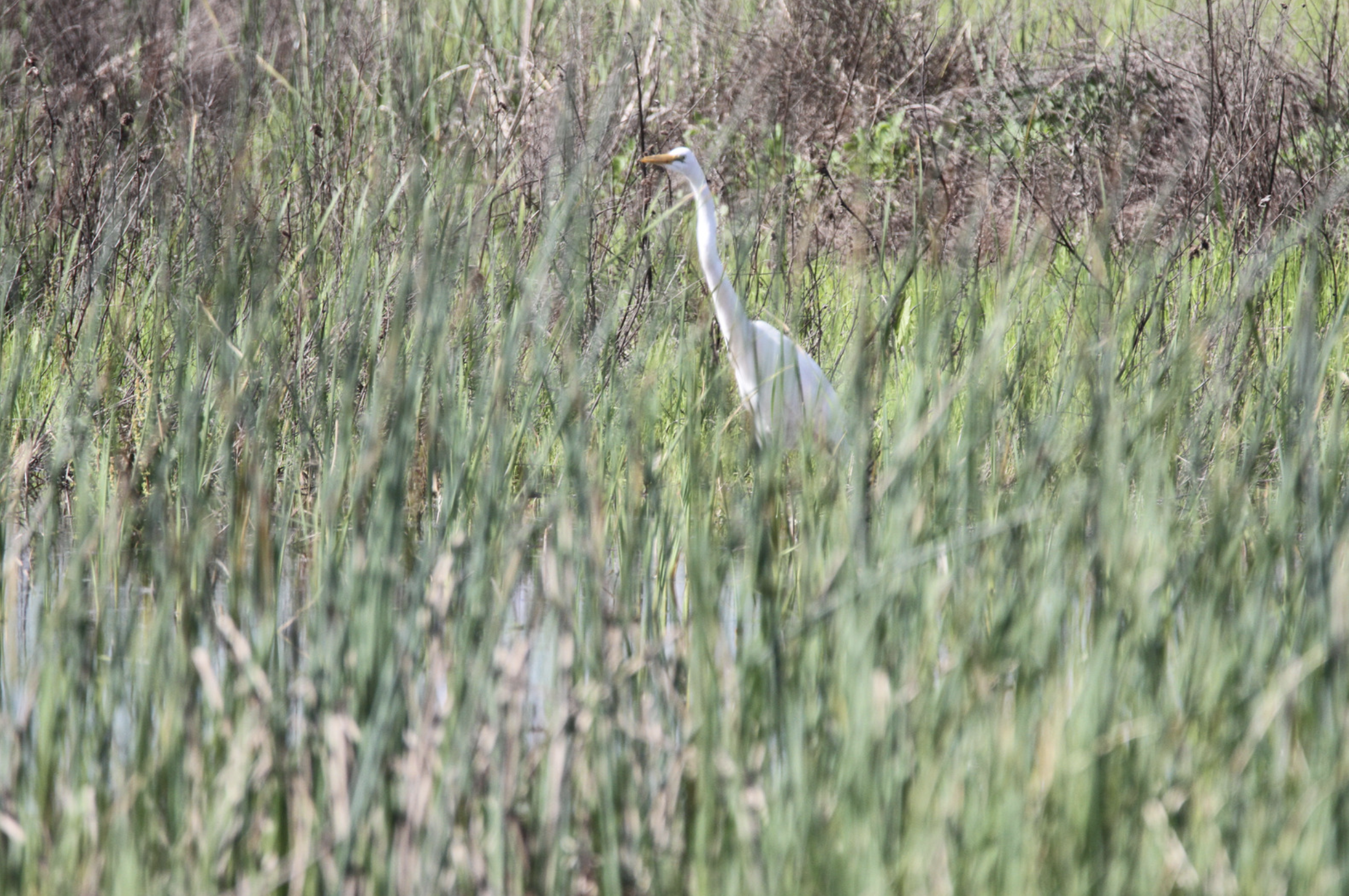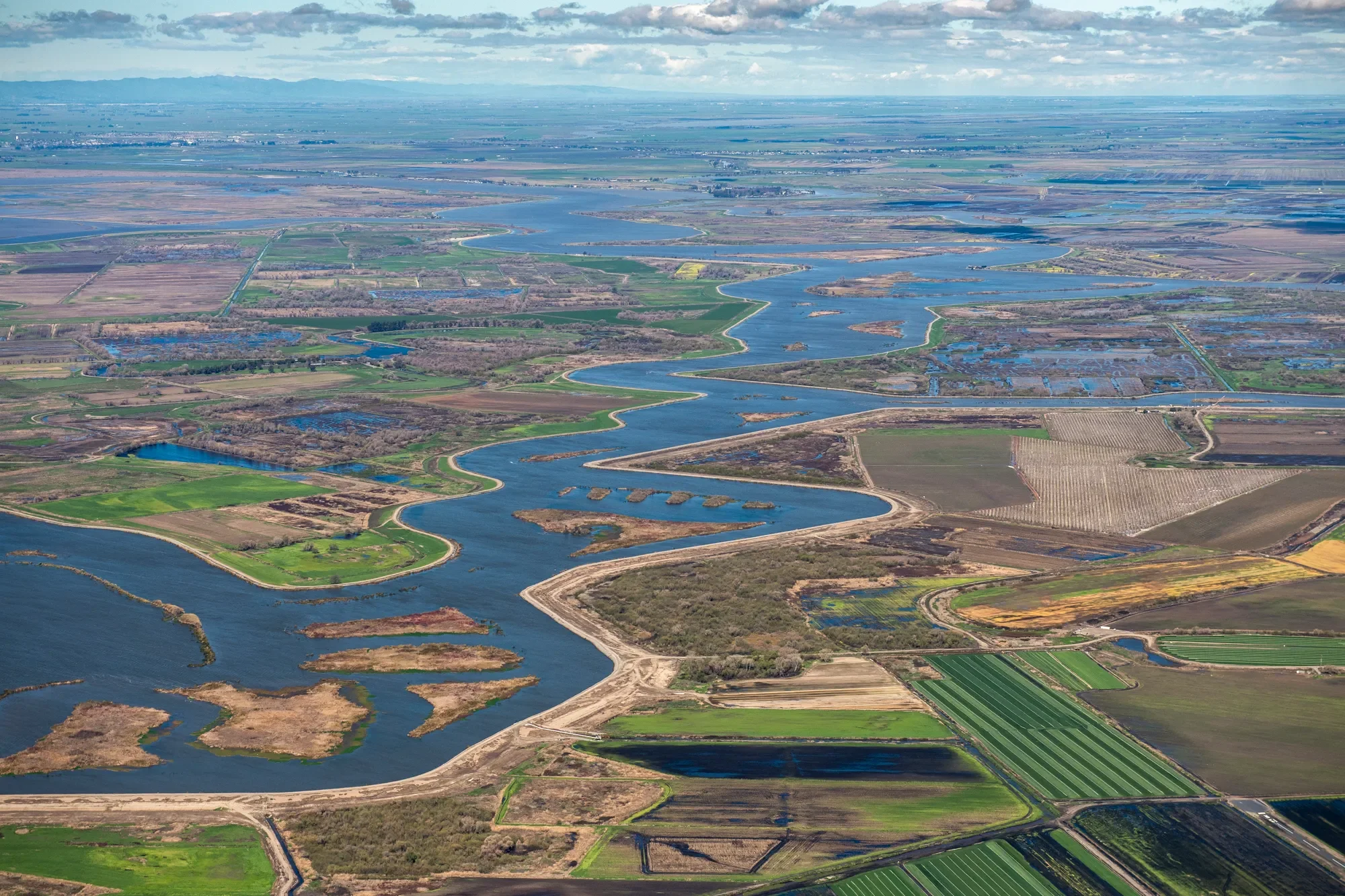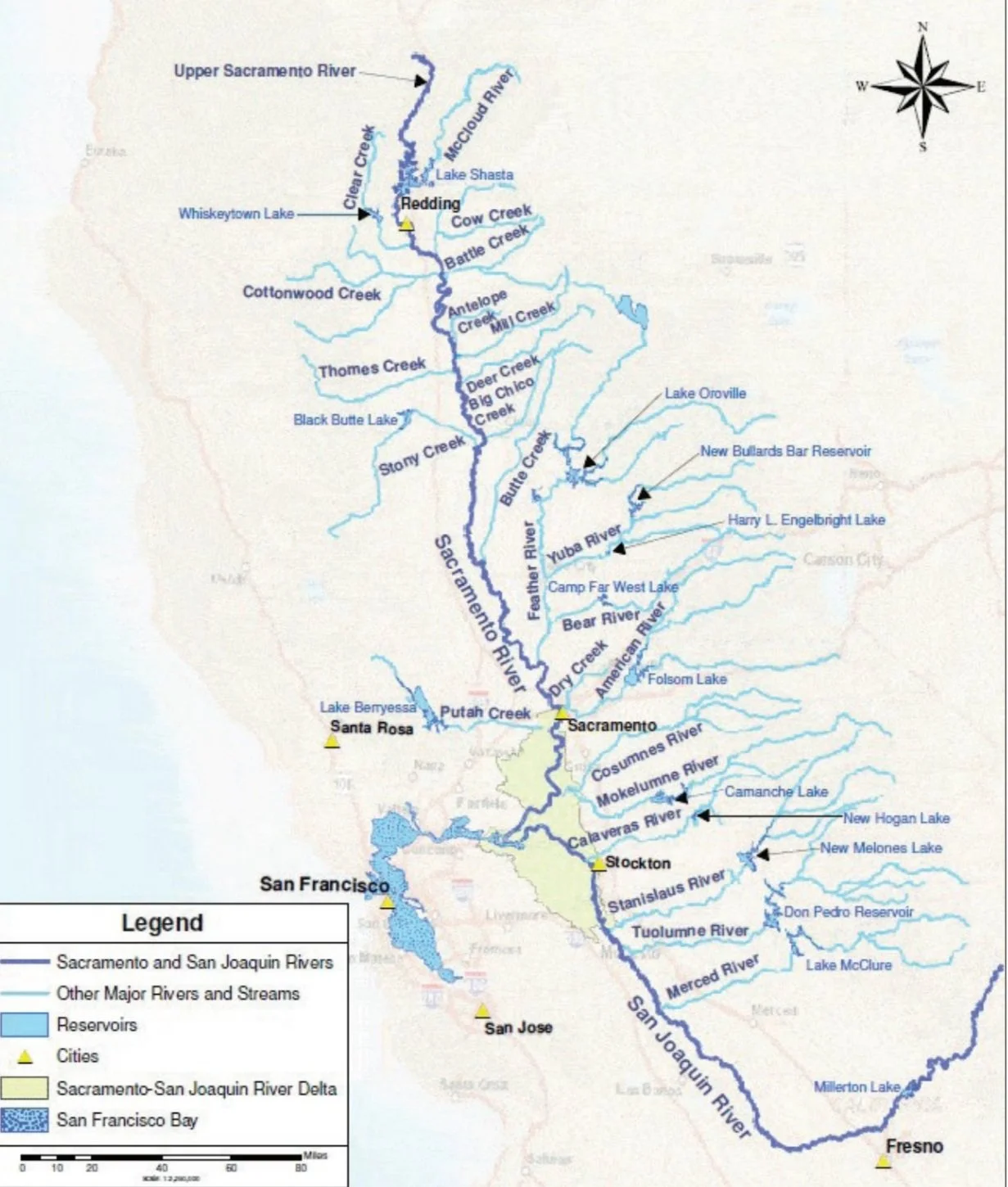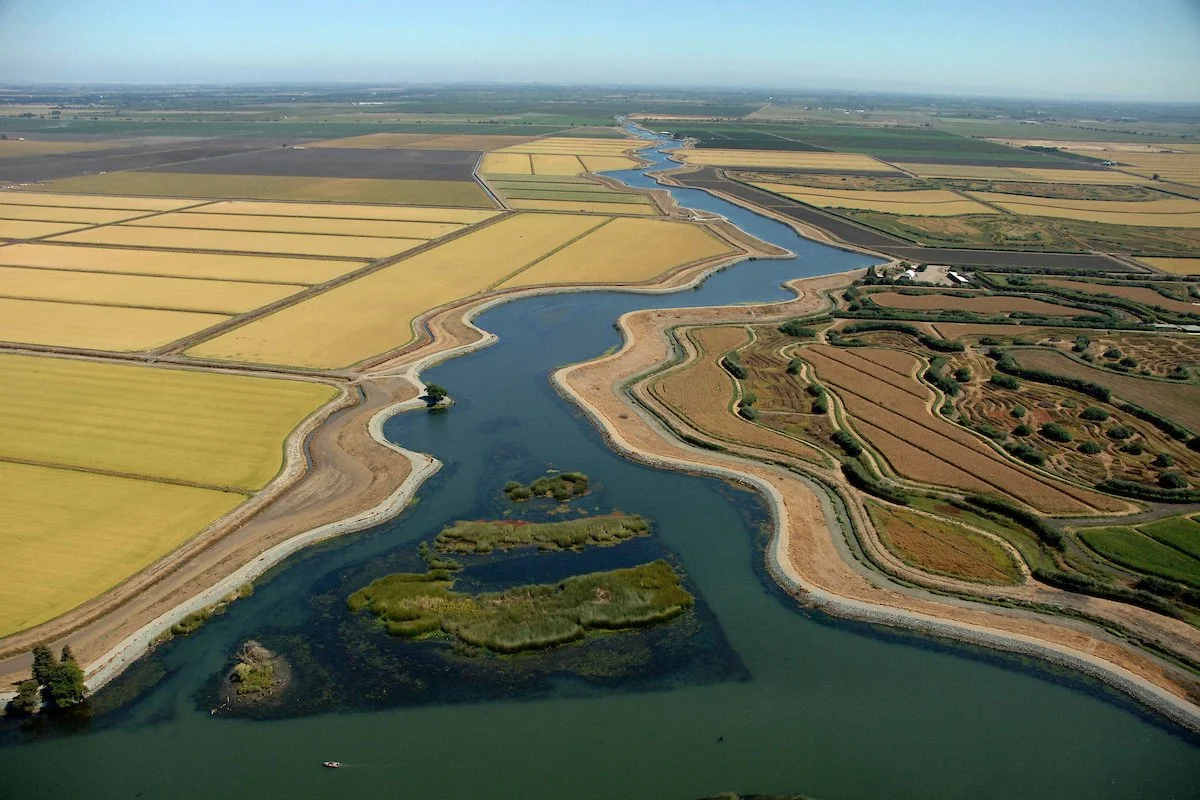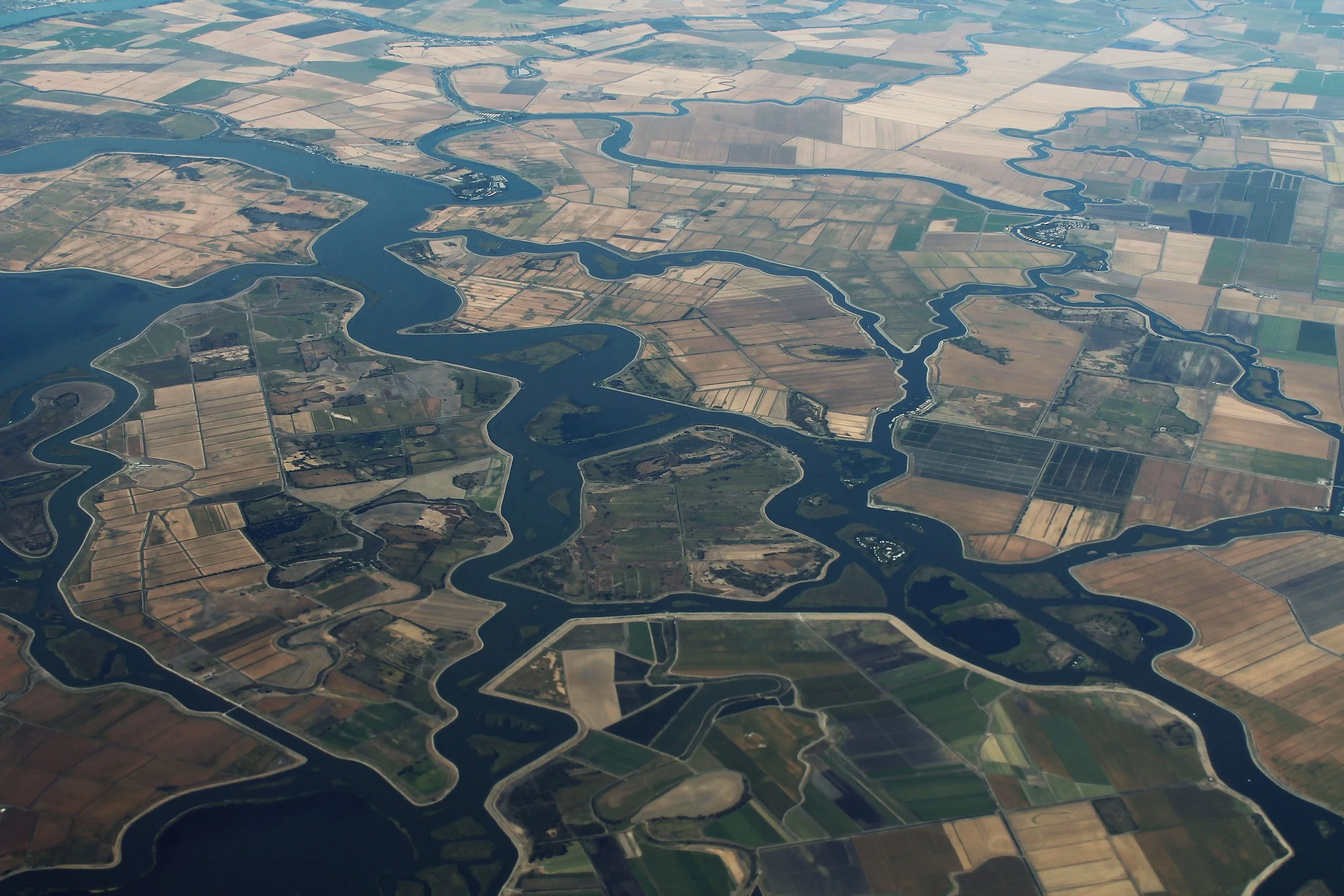
Defending the Bay-Delta
Our Defending the Delta efforts unite advocacy, science, and community action to protect the Sacramento-San Joaquin Delta’s ecosystems, safeguard California’s water future, and uphold environmental justice for the communities who depend on it.
California’s Estuary at Risk
The Sacramento-San Joaquin River Delta is the heart of California’s freshwater system—and the largest estuary on the West Coast of the Americas. Where the state’s two great rivers meet and flow into San Francisco Bay, the Delta once sprawled with tidal marshes, tule grasses, and channels teeming with salmon, smelt, sturgeon, and migratory birds. This mosaic landscape has supported Indigenous communities for over 10,000 years and continues to connect ecosystems from the Sierra Nevada to the sea.
Today, over half of California’s river runoff passes through the Delta. It is the hub of the State Water Project and Central Valley Project, delivering drinking water to more than 25 million people and irrigation for millions of acres of farmland. Despite 150 years of levees, diversions, and industrial infrastructure, the Delta remains vital—for wildlife, communities, and California’s water future.
Why the Delta Matters
This 1,100-square-mile estuary:
Supports over 750 species of plants, fish, and wildlife.
Channels more than half of California’s river runoff.
Sustains key fisheries and critical migratory bird pathways.
Delivers drinking water to 25 million people.
Supports small farms and rural communities in the heart of the state.
The Delta isn’t just important locally—it’s central to the state’s ecological and water infrastructure. When the Delta is harmed, the effects ripple across California.
What’s Going Wrong
The Delta is being pushed to collapse:
Water diversions have reduced natural flows, endangering native fish and birds.
Toxic algal blooms—fueled by pollution and warm, stagnant water—threaten human and ecological health.
Communities near and within the Delta face rising pollution, degraded water, and public health risks.
Essential ecosystems are vanishing as water infrastructure prioritizes export over balance.
The Delta Tunnel: Paused, Not Prevented
The Delta Conveyance Project (DCP)—commonly called the Delta Tunnel—is a proposed 45-mile underground tunnel that would divert freshwater from the Sacramento River before it reaches the Delta. The water would be sent south to large-scale agricultural operations and water agencies, bypassing the ecosystems, wildlife, and communities that depend on natural flows.
If built, the tunnel would:
Reduce freshwater flows critical for fish, birds, and wetlands—pushing species like Chinook salmon and Delta smelt closer to extinction.
Worsen toxic algal blooms and accelerate saltwater intrusion, contaminating waterways.
Degrade water quality for Delta communities that rely on clean water for drinking, recreation, and small-scale farming.
Damage tribal cultural resources and traditional food sources tied to Delta lands and waters.
Disrupt towns for over a decade with massive industrial construction.
Fail to deliver on promises of seismic safety or climate resilience.
The Real Costs
A recent economic analysis from ECOnorthwest, commissioned by the California Water Impact Network (C-WIN), reveals the tunnel is wildly overvalued and under-analyzed:
The true cost could reach $60–$100+ billion, far exceeding the DWR’s estimate of $16–$20 billion.
The project benefits Southern California water agencies and agriculture, especially almond and pistachio growers, while ratepayers and taxpayers shoulder the costs for decades. Declining urban water demand makes the DCP’s justification outdated.
The tunnel risks $1.1–$2.6 billion in losses to California’s salmon, harming the economy and species.
Funding this costly project would hinder investments in smarter, cheaper water solutions like recycling, stormwater capture, conservation, and farmland retirement.
Current Status
In 2025, California legislators blocked attempts to fast-track the Delta Tunnel by excluding bond funding and special environmental exemptions from the state budget. This means there is currently no new public funding for the tunnel and no shortcuts around environmental review or judicial oversight.
But the fight is far from over. Water rights hearings are still underway, and the Department of Water Resources (DWR) continues to push the project forward. Tunnel proponents are expected to introduce new legislative proposals in upcoming sessions.
Our Strategy
We believe the Delta Tunnel represents the wrong path for California’s water future. It sacrifices a critical ecosystem and harms frontline communities to benefit a handful of powerful interests. We are:
Convening a coalition of tribes, environmental justice groups, and local advocates to ensure their voices are heard in Sacramento.
Defending science-based water management solutions that prioritize conservation, water recycling, and ecosystem health over destructive megaprojects.
Advocating for water polices to protect both California’s water security and the environment.
We’re standing with communities, tribes, and environmental advocates to stop this destructive project—and to demand a water system that works for people and ecosystems, not just powerful interests that have spent decades weakening California’s environmental protections.
Updates & News
A Big Win for the Delta: People Power Stops Dangerous Trailer Bills
September 11, 2025: Two last-minute “trailer bills” expected to fast-track the Delta Conveyance Project and weaken public review of the Bay-Delta Water Quality Control Plan were stopped in their tracks. These measures would have sidelined Tribes, erased environmental protections, and given a blank check to corporate water contractors.
Read the full story here >Defending California’s Waters: Standing Against CEQA Rollbacks and the Delta Tunnel
September 5, 2025: Last week, we joined advocates for a powerful Lobby Day at the Capitol to oppose two dangerous budget trailer bills that threaten California’s water, ecosystems, disempower communities, and bypass long-standing environmental safeguards. Read the full story here >
Widespread Opposition for Governor’s Proposal to Fast-Track Delta Tunnel Project
May 20, 2025: Leaders of the Legislative Delta Caucus and statewide organizations stood united together today during a press conference to denounce Governor Newsom’s budget proposal to fast-track the Delta Tunnel Project and encourage fellow legislators to oppose any plan to accelerate construction of the $20 billion-plus, destructive tunnel.
Read the full story here >
Donate to help keep our Delta healthy.
Our Defending the Delta program depends on the support of people like you to safeguard California’s most vital freshwater estuary. Your involvement helps us advocate for resilient water systems, protect endangered species, and defend communities at risk from environmental degradation. Sign up for our newsletter to stay informed on our efforts to protect the Delta—and donate today to help sustain this critical work.

